Valve to throat ratio. Is a bigger valve always better?
Discussion
The key word is 'blend', this means the valve throat will not be at 90 degrees to the 60 degree cut so not as wide as you calculate. It may be worth having someone cut the 60 down to size with a 75 degree 'bottom' bottom cut as it were, this will give you a better idea of the shape required. With the larger inlet valve go for a 1.5 mm 45 degree seat.
I hope this helps.
Peter
I hope this helps.
Peter
Some further interesting information on the last page of this thread and what it links to..
http://www.pistonheads.com/gassing/topic.asp?h=0&a...
Even on an F1 engine with almost perfectly downdraft ports the optimised seat and throat profiles are much as I describe in the thread I previously mentioned. 85% to 87% throat to valve diameter ratio and seat widths of 4% to 4.5% of the inlet valve diameter. There is no point opening up ports or throats larger than is required to flow the maximum amount of air the valve itself can pass. Even on very downdraft ports that's nowhere near a throat to valve diameter ratio of 0.92. If you've read somewhere that this is a target to aspire to on road modified engines then you can discount that advice without a second thought.
http://www.pistonheads.com/gassing/topic.asp?h=0&a...
Even on an F1 engine with almost perfectly downdraft ports the optimised seat and throat profiles are much as I describe in the thread I previously mentioned. 85% to 87% throat to valve diameter ratio and seat widths of 4% to 4.5% of the inlet valve diameter. There is no point opening up ports or throats larger than is required to flow the maximum amount of air the valve itself can pass. Even on very downdraft ports that's nowhere near a throat to valve diameter ratio of 0.92. If you've read somewhere that this is a target to aspire to on road modified engines then you can discount that advice without a second thought.
When you cut the seats on either a standard head (throats too small) or fit larger valves in either std or modded head you will end up with masses of bottom cut to blend in, this, if done by removing two sides of a triangle(as it were) will give a gentler entry angle into the immediate valve seat, this should flow more than a more vertical entry into the seat. Maybe it is a matter of where valve seat becomes throat or then port is confusing you? USA calls it valve bowl which kind of implies (to me) seat down to guide area
Peter
Peter
Hi Bobby following sequence to show cutting and blending seaat for 41.3mm inlet valve.
First pic, cut 30/45(1.5mm)60 seat, note how cutter has dug into insert at bottom so plenty to remove to blend.
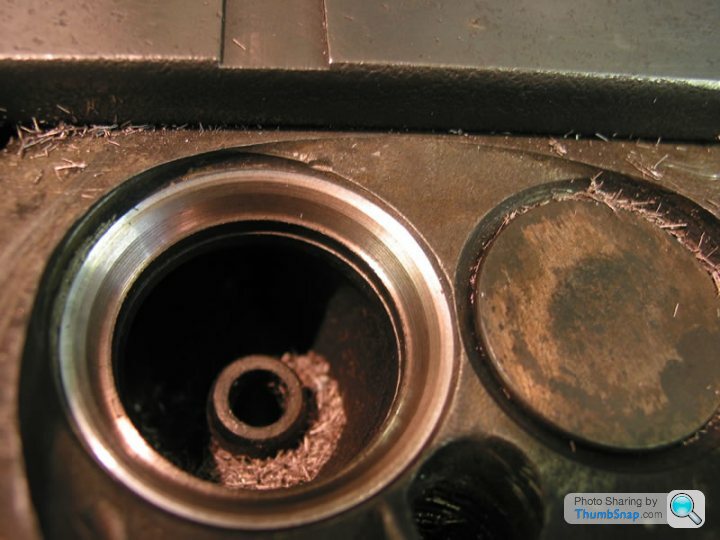
second pic, hand cut 70 degree botton cut to reduce 60 to 1.5mm.

Third pic, fettle with carbide burr
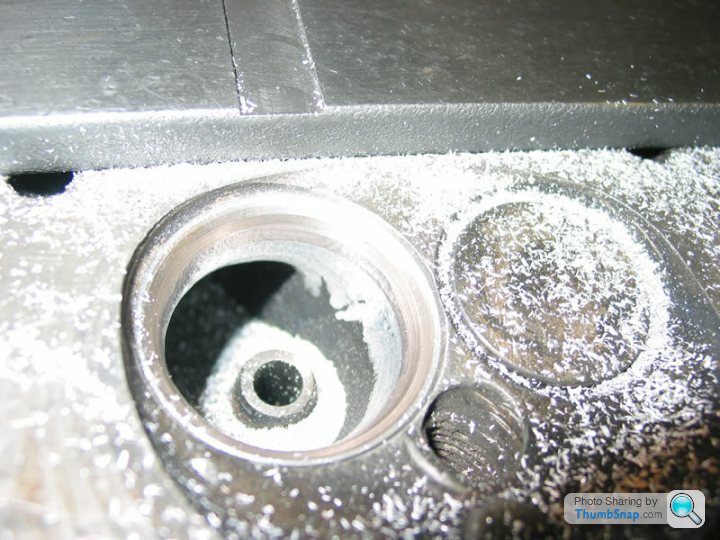
Fourth pic, blend with sander band.
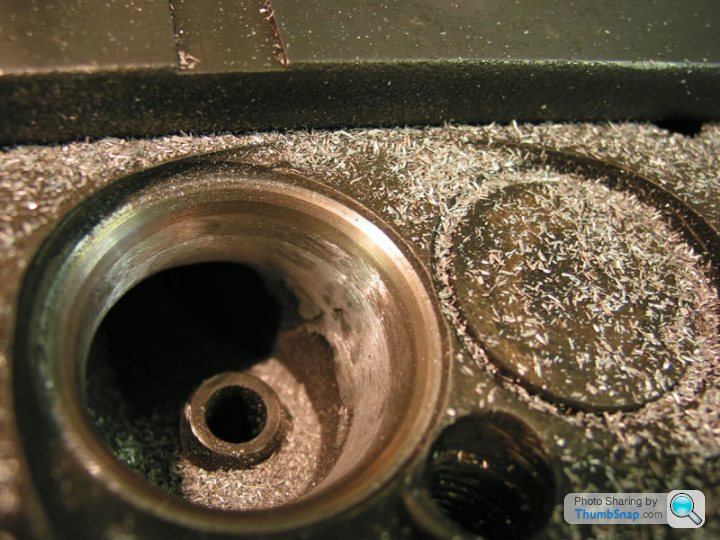
Fifth pic, fan grinder finish.
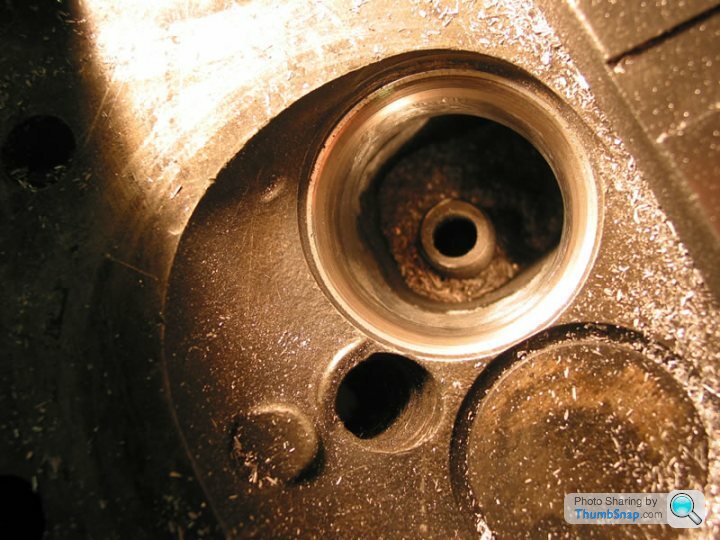
Last pic, 36 mm valve will not go to bottom of insert so throat less than 36 mm which is 87% of the inlet valve size. I will hold on to the head and you are welcome to come along and measure.
Peter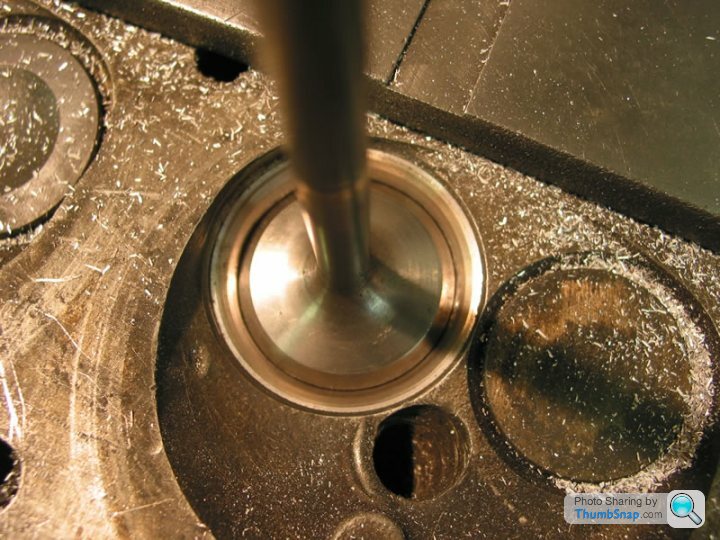
First pic, cut 30/45(1.5mm)60 seat, note how cutter has dug into insert at bottom so plenty to remove to blend.

second pic, hand cut 70 degree botton cut to reduce 60 to 1.5mm.

Third pic, fettle with carbide burr

Fourth pic, blend with sander band.

Fifth pic, fan grinder finish.

Last pic, 36 mm valve will not go to bottom of insert so throat less than 36 mm which is 87% of the inlet valve size. I will hold on to the head and you are welcome to come along and measure.
Peter

I do actually have a set of 43/37mm valves spare, only problem being they're on a 5/16 stem (with a triple groove retainer) rather than 11/32.
I tried to source the guides, Paul at REC suggested they were Ford X-flow/Essex/Pinto but a call to burton power later it appears the OD of the ford guide is way too small. Not sure if the pinto triple groove collet fits the rover valve spring retainer either.
I think the cost of seats/guides/collets etc and the associated machining work would put the 43mm's way over my budget.
I tried to source the guides, Paul at REC suggested they were Ford X-flow/Essex/Pinto but a call to burton power later it appears the OD of the ford guide is way too small. Not sure if the pinto triple groove collet fits the rover valve spring retainer either.
I think the cost of seats/guides/collets etc and the associated machining work would put the 43mm's way over my budget.
Well finally got round to getting the heads off and recutting the seats. A quick and dirty test on my flowbench showed 167cfm with the recut seats and 1.63" versus 158cfm with standard valves. (My bench isn't calibrated to anything in particular but a stock unported rover head flows around 136 cfm peak, all at 28" h2o)
Digging out my old flow bench data from 20 plus years ago and converting from 25" to 28" your stock unported, modified stock valve and modified 41.4mm valve flow figures are right on the money. You will have picked up about 15 bhp when you get it back together. 265 bhp if it was 250 before.
Bobby Shaftoe said:
Well finally got round to getting the heads off and recutting the seats. A quick and dirty test on my flowbench showed 167cfm with the recut seats and 1.63" versus 158cfm with standard valves. (My bench isn't calibrated to anything in particular but a stock unported rover head flows around 136 cfm peak, all at 28" h2o)
With valves in or not and if so at what lift?Gassing Station | Engines & Drivetrain | Top of Page | What's New | My Stuff




